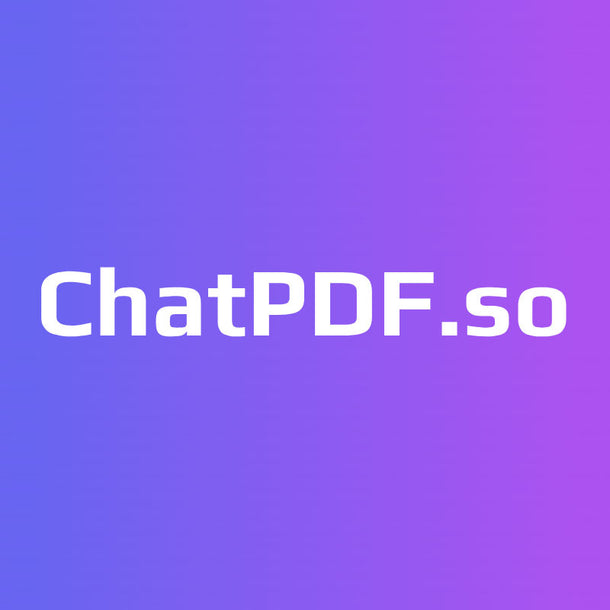A chat-PDF AI tool powered by GPT4 128k that allows you to ask questions in natural language from your PDF documents.
About Chat-PDF is a chat tool driven by artificial intelligence, created to extract and generate content from PDF documents. It empowers users to discover fresh insights, compile reports, inquire, and expedite tasks swiftly through the utilization of the latest GPT4 model.
Key features of Chat-PDF.so comprise:
- Conduct conversations concurrently with numerous PDF documents.
- Perform bulk uploads of thousands of PDFs.
- Organize and oversee documents through folder management.
- Efficiently condense extensive PDFs into concise summaries.
- Employ a bespoke chat algorithm enhanced with GPT-4 turbo technology.
- Seamlessly integrate the tool into your website.
- Share and collaborate via a distinctive chat interface using a link. This functionality enables effortless sharing of your chatbot with peers and associates, eliminating the need for them to register and ensuring convenient access to your bot.
Before you begin, ensure you have met the following requirements:
Node.js and npm: Make sure you have Node.js and npm (Node Package Manager) installed on your system. You can download them from nodejs.org.
Backend (Node.js):
Utilizes Node.js to handle server-side logic and provide a scalable and efficient backend architecture. Employs Express.js, a minimalist web framework for Node.js, for handling HTTP requests and routing. Integrates PDF parsing libraries such as pdf-lib or pdf-parse to extract text content from uploaded PDF files. Implements WebSocket technology using libraries like Socket.IO for real-time communication between clients and the server. Includes authentication and authorization mechanisms using middleware like Passport.js or JWT (JSON Web Tokens) for secure user access. Frontend (React):
Built with React.js, a popular JavaScript library for building user interfaces, to create a dynamic and responsive frontend experience. Utilizes Redux or Context API for state management to maintain a consistent application state across components. Implements components and UI elements using libraries like Material-UI or Bootstrap for a polished and modern look. Integrates WebSocket client libraries to establish a connection with the server for real-time chat updates. Includes features for PDF document visualization, text highlighting, and chat message rendering within the PDF viewer interface.
Installation Clone the Repository: Clone this Chat-PDF repository to your local machine using:
git clone https://github.com/xyz/Chat-PDF.git
Navigate to the Frontend Directory: Open your terminal and navigate to the frontend directory within the cloned project:
cd Chat-PDF/app Install Dependencies: Install the required dependencies by running:
npm install Start the Development Server: To run the React frontend, use the following command:
npm start
Configure environment variables:
Create a .env file in the backend directory. Define environment variables such as database connection strings, API keys, and authentication secrets.
You can see the webpage at: Open your web browser and go to http://localhost:8080. You'll now be able to use the React-based user interface to interact with the Chat-PDF application.
** Please start both react and nodejs server at same time. **
If you don't want to use the open source version than you can use the web version of the app: https://ChatPDF.so/
Engaging with Chat-PDF is effortless. Simply start chatting, as if you're conversing with a friend. Ask your PDF anything you'd like to know about, and it comprehends your queries seamlessly. It's like engaging in a dialogue that effortlessly guides you to the exact information you need, without the headache of combing through pages.
